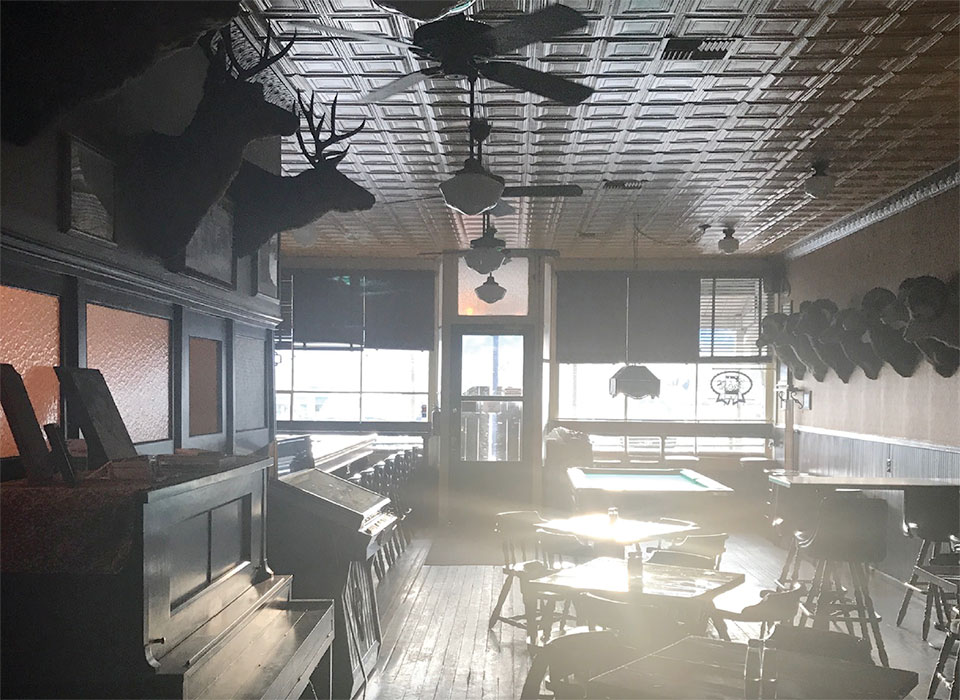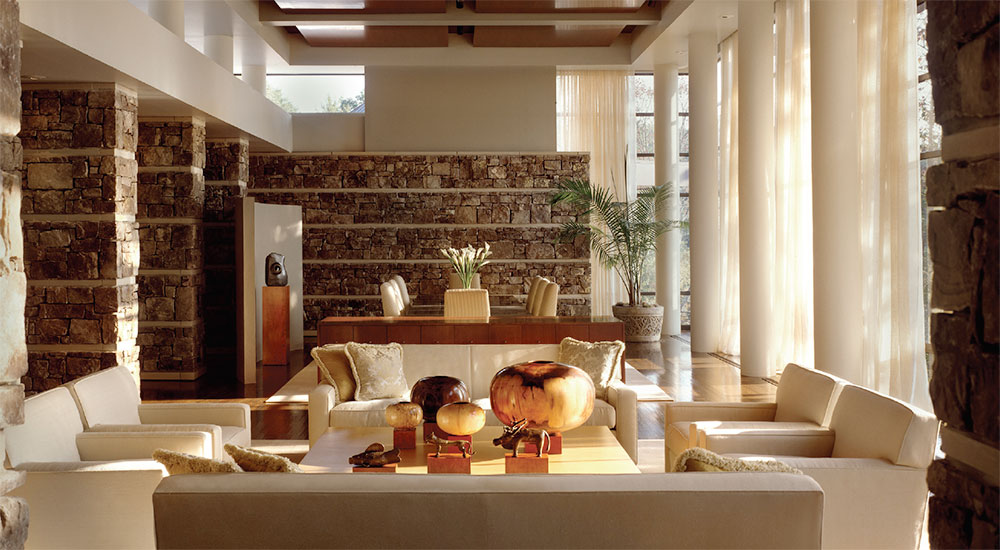Interior Mixology: Shaken. Stirred. Blended. Neat.
by Aaron Kampfe
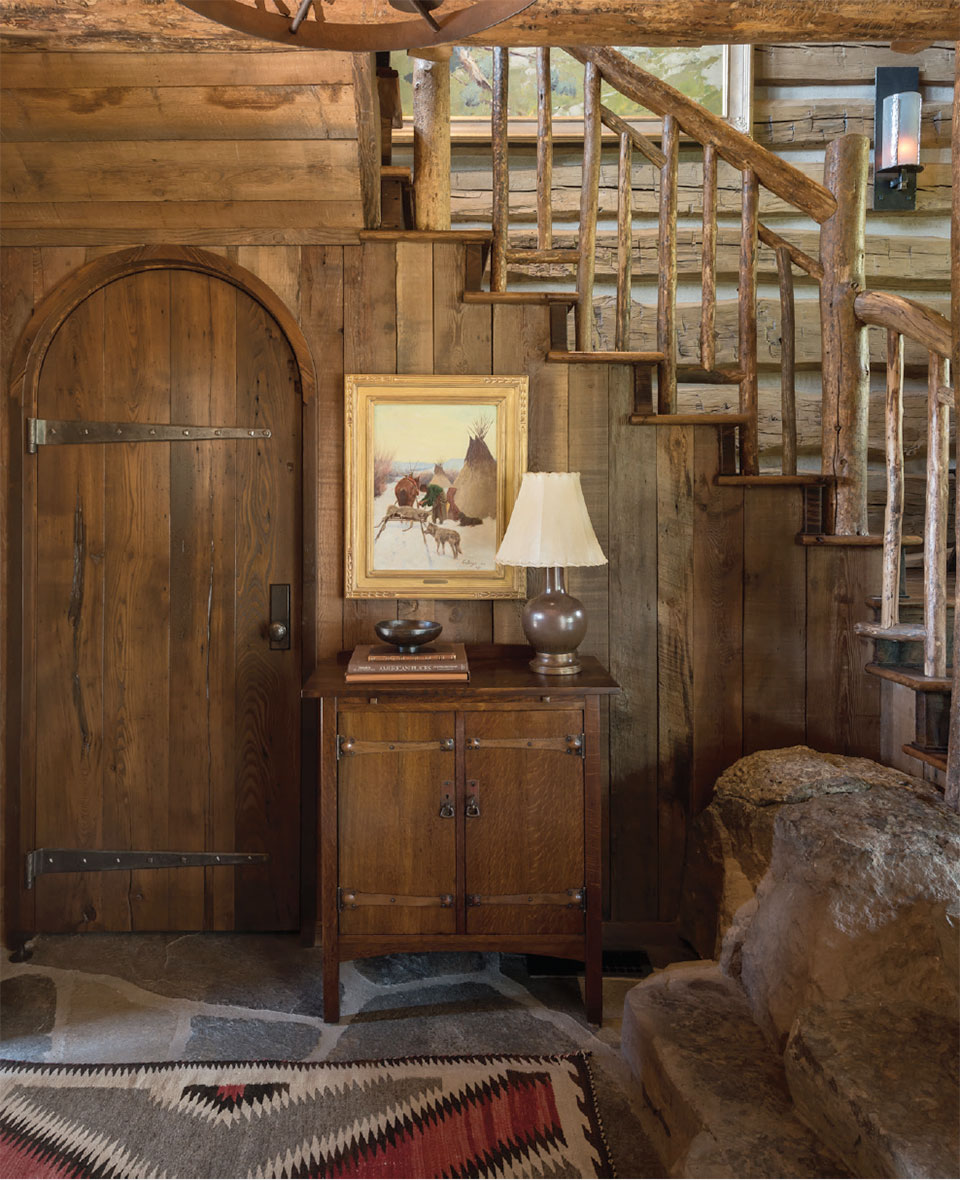
An attentive bartender begins with listening to his customer. Even when a standard classic cocktail is ordered,
a patron has personal tastes. For example, a martini may be vodka or gin, on the rocks or straight up, wet or dry, shaken or stirred. Add in specific liquor preferences and garnish choices and the variations may be in the thousands.
While a good bartender knows the proven formulas, a great bartender will also know his customer. The personal interaction may be as important as how the spirits are being poured, mixed, and served.
Interior designers, like bartenders, are mixologists. Good ones know the fundamentals and the formulas. The better ones know their clients’ tastes, personalities, and lifestyles and have a gift for interacting with them.
But what makes an interior designer truly extraordinary? How does an interior designer become nationally-renowned? What qualities, characteristics, and traits elevate that design beyond the typical mix?
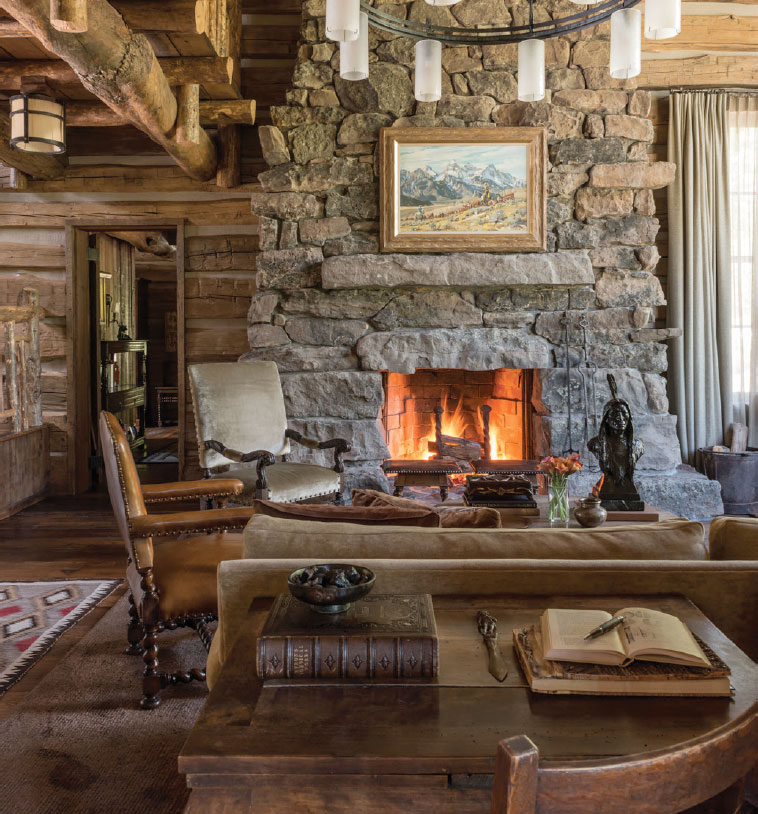
“THOUGH I THRIVE IN A CITY AND I’M INSPIRED BY URBAN DESIGN, THE ROCKY MOUNTAIN WEST IS WHERE I’M MOST GROUNDED.”
––William Peace, Peace Design
For the past 30-plus years, William Peace and his firm Peace Design have been serving clients across the country. From their studios in Atlanta and Bozeman, they approach each project with both a world view and a local perspective. With a wide breadth and diversity of projects, the Peace Design imprint can be found from New York to LA, Florida to Seattle, San Antonio to Coeur d’Alene. Whether the property is a cosmopolitan pied-à-terre, rural saloon, coastal bungalow, hunting lodge, sprawling ranch residence, or ski in/ski out alpine home, two guiding principles remain fundamental for Peace Design: authenticity and environment.
As Peace says, “First, we are driven by location and its climate, topography, history, and culture. The environment influences the interiors. Second, we are driven to create designs that are authentic to the end user. Who uses that particular room in the house and what speaks to them, not just aesthetically, but also emotionally, intellectually, and spiritually? We ask the same questions when designing public spaces like a wellness retreat center, place of worship, museum, or restaurant. Who uses that space and how?”
A native of the South, Bill grew up in the crossroads of the bluegrass horse country of Lexington and his roots of eastern Kentucky. After studying architecture, design, and fine arts at the University of Kentucky, he began his career working in Atlanta. In the 1990s, he began to put down roots in the West. Peace says, “Though I thrive in a city and I’m inspired by urban design, the Rocky Mountain West is where I’m most grounded.”
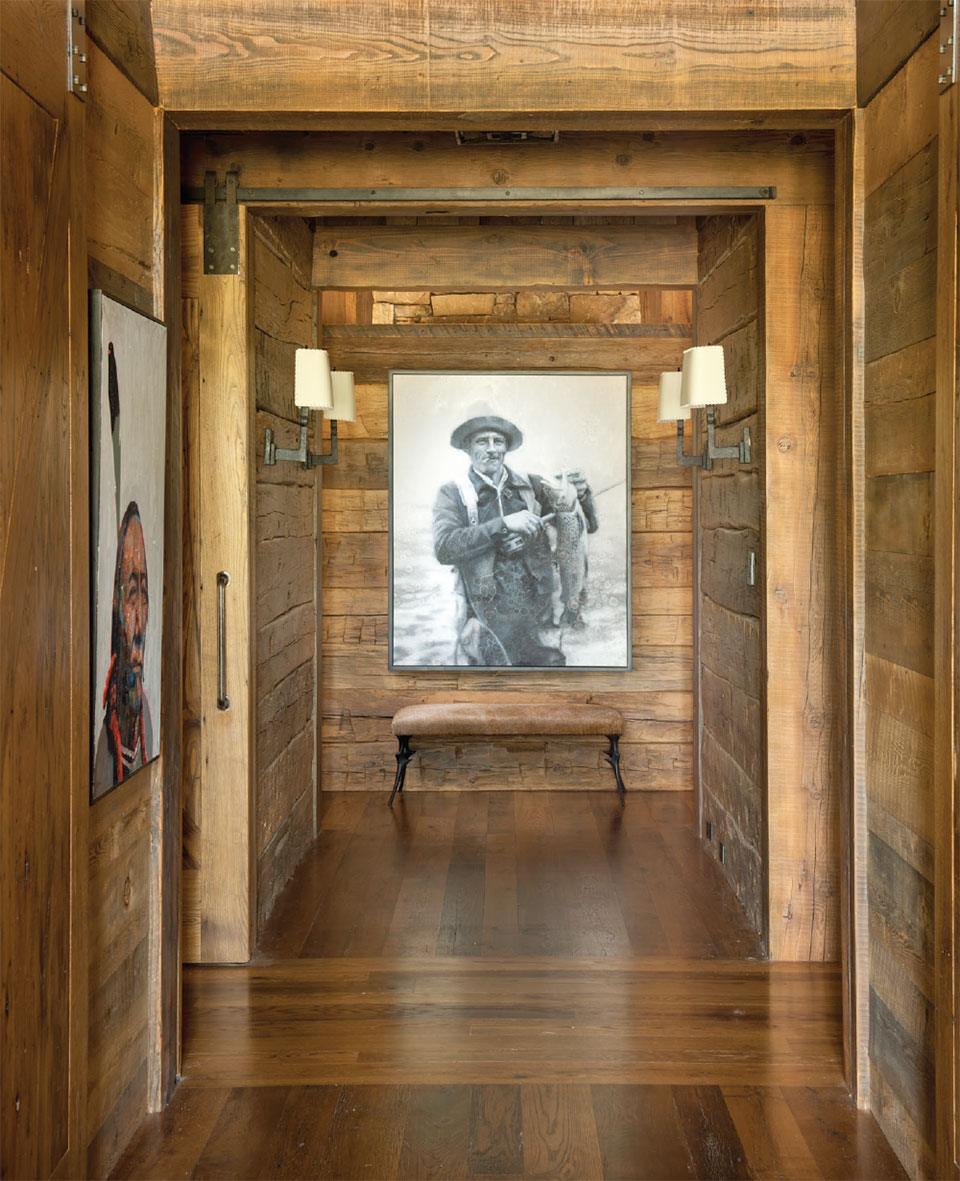
Grounded in Montana he is. These days, you’ll see Peace walking Bozeman’s Main Street, meeting with local art gallery directors sourcing for clients, or chatting with colleagues while sitting at a local coffee shop or watering hole. With local business partners who are also his friends, he has invested in Montana communities as a part owner of Plonk, the Old Saloon, and Stacey’s Old Faithful Bar & Steakhouse. While he does venture around the country and around the world sourcing for projects and finding inspiration, he comes home to Montana.
Rob McRae, principal at Highline Partners, a luxury home builder, says, “Bill and his team bring a very diverse skill set and design aesthetic. They have done projects in Montana for decades and understand the Western vernacular and how it has evolved over time. That, combined with commercial and modern work on other projects around the country, give the firm a unique advantage and portfolio that everyone finds interesting and inspirational. It also provides a wide range of resources to create a unique Montana brand of design.”
Discussing Rocky Mountain interior design, Peace reflects, “Design in the American West didn’t originate in a vacuum; it evolved over hundreds of years with disparate influences. Native Americans knew the raw materials of the land and the power of nature. Their wisdom and world view influence how things are in harmony with the land. Europeans via the East Coast arrived as explorers and homesteaders, bringing their own influences of building techniques. As a designer, how do I mix the elements that honor the diverse cultures of the West? The combinations are endless and we start with the location and the client’s vision.”
“First, we are driven by location and its climate, topography, history, and culture. The environment influences the
interiors”
–William Peace, Peace Design
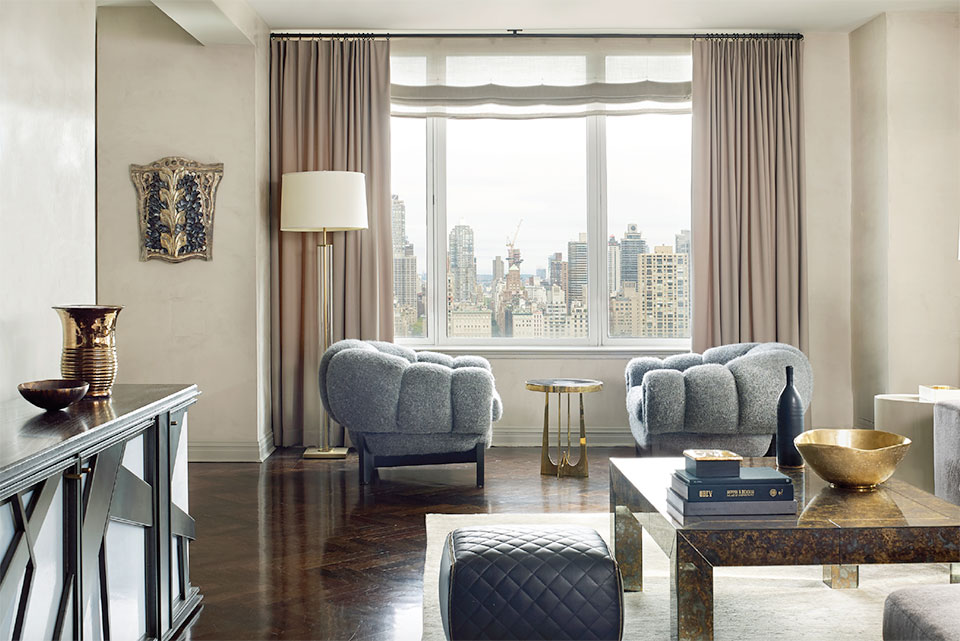
Shaken.
Shaking gives a cocktail its texture. A good shake will cause the ice to rattle around in the shaker, cooling the surrounding liquid. The ingredients are aerated, emulsified, and integrated. The result is not just about taste, but about the experience—cool in temperature and purposefully mixed with appropriate components.
An often-desired design outcome is “elegance.” In the Peace Design approach, elegance is more than Hollywood glamour and status symbols of wealth. Elegance is an interior grace, space that is soothing, and an artistic expression that puts one at ease. Peace prefers the term “harmony within.”
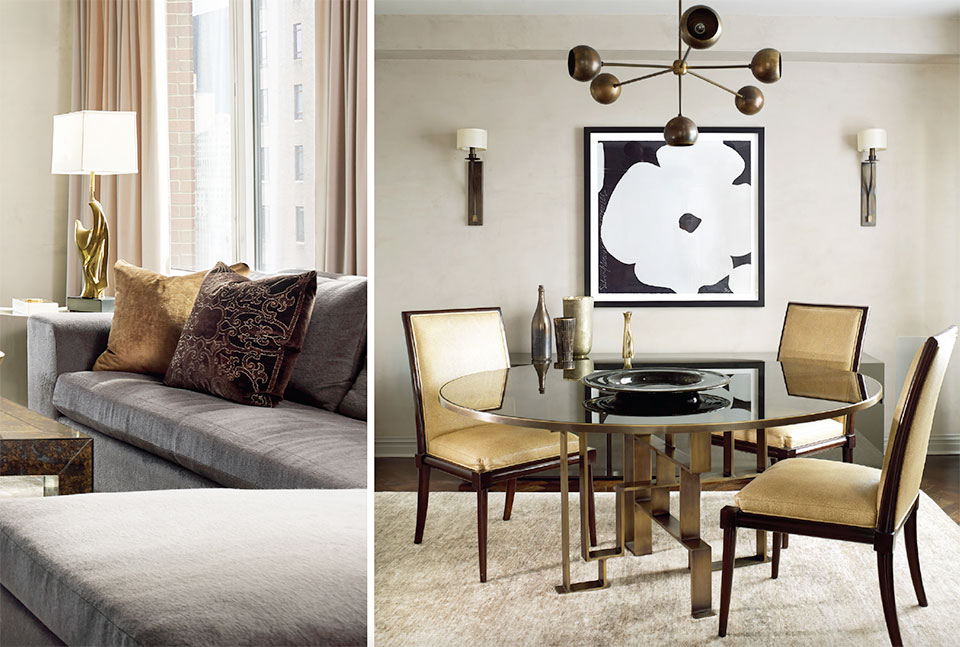
Peace explains, “The prestige of the address, size of the space, and monetary outlay is less important to me; it’s about the people and creating something special for them. One person’s elegance is not another person’s elegance, but when a space has ‘harmony within,’ everyone can appreciate it.”
For a New York City apartment, the broad design concept is like a classically executed painting that incorporates all the visual elements of art—line, shape, tone, color, pattern, texture, and form. The blue-gray of the urban landscape is reflected in the art, architectural finishes, furniture, and textures. The warm color palette is accented with gold in the picture frame, window treatment, pillows, sculpture, and cocktail table. While the color gold may be associated with opulence, the gold in this space functions to create not just elegance, but balance and harmony.
“Balance, texture and a soothing palette create harmony within.”
–William Peace, Peace Design
A Peace Design client has an adventurous, family-focused spirit, but to find that “harmony within,” Peace also must tap into that client’s core emotional, intellectual, and spiritual responses. He then can begin that distilling process and incorporate his partners into the process. Bill and his team are continually looking for artisans and artists whose work can be fluidly incorporated into a client’s home. He challenges fabricators—such as furniture builders, lighting designers, sculptors, rug-makers—to create custom pieces that are destined for a specific home for a specific client.
Carl Pearson, of IronGlass Lighting in Bozeman, says, “Bill’s approach is down-to-earth, authentic, and without any pretension or ego. His focus is the human relationships and how people relate to their environments. We have worked with him and his team for years and every piece we create is well-conceived and special to the space.”
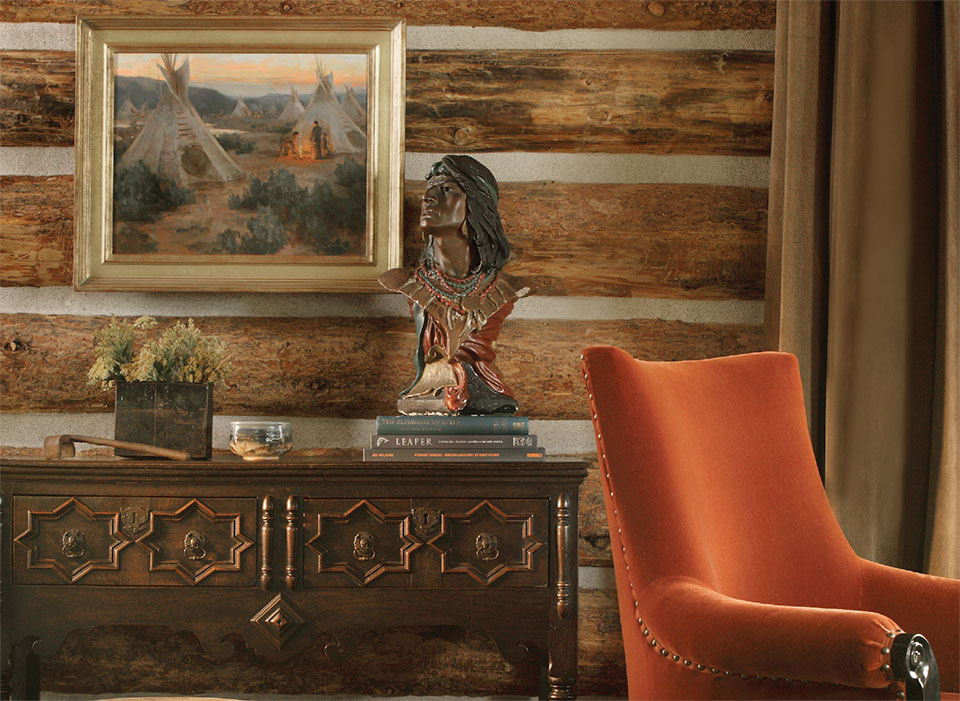
Stirred.
Stirred cocktails are spirit-forward. The base of the cocktail, its booze, is modified with such elements as bitters, additional spirits, liqueurs, or fortified wine. The alcohol is accented and augmented without diluting the core flavor, the spirit’s authenticity.
For projects throughout the West, Peace pays particular attention to the environment. With the wide diversity of landscapes within the region, the site’s specific location and how a client relates to the site is core to his process. Among his Montana portfolio are sportsmen’s lodges, ski homes, saloons, restaurants, and ranch residences. Peace says, “Interiors are contextual—true to people and their environment.” As he begins a project, he asks, “What is the spirit-forward element for this particular property? What is true and authentic for the client and what is true and authentic for the location?”
While Peace has designed numerous interiors for Montana homes, each project has a unique outcome. Nikki Todd, gallery director and owner of Visions West Contemporary, says, “Among many elements that set Bill apart from other designers is his authentic vision. Each project has its own ethos. When it comes to art in the home, he has a connoisseur’s eye for great art and how great art can elevate a space.”
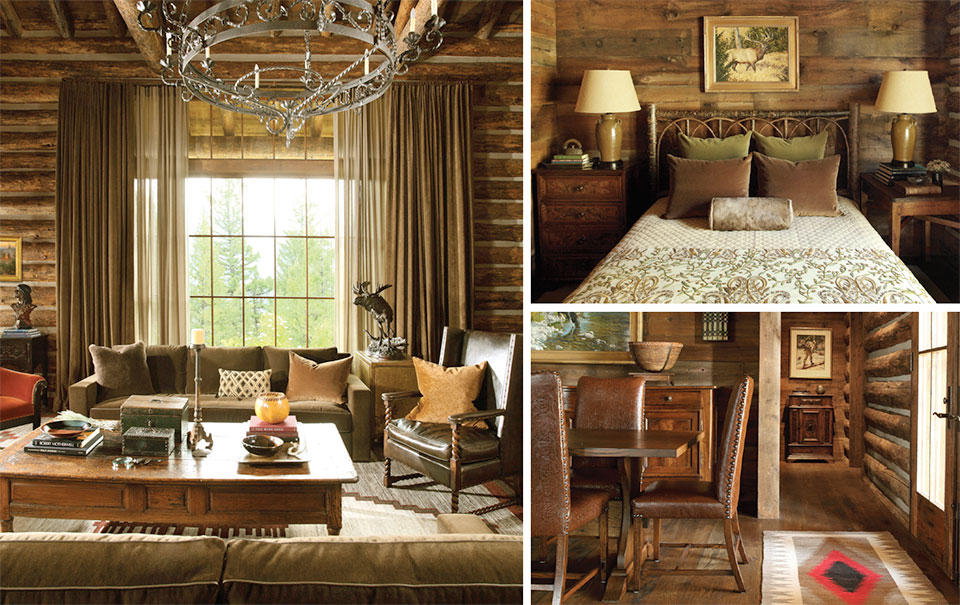
For a Big Sky area residence, the owners desired a home that was “true Montana” and “classic ranch.” Peace says, “Traditional Western design originated from practicality. Exposed logs in buildings became standard because homesteaders didn’t have many other options. They filled in gaps in between the logs with various types of chinking, depending on what was available. After a while, this became not just the go-to building technique, but the aesthetic, and eventually became established Western vernacular. Even in a more contemporary rustic home, this still influences the design.”
“Interiors are contextual—true to people and their environment.”
–William Peace, Peace Design
Specialized homebuilders truly understand these historic contexts and associated building materials and methods. Yellowstone Traditions is one of them. Justin Bowland, one of the company’s principals, says, “Peace’s understanding of the history of the West, early European influences, local building resources, and agrarian lifestyles, all are thoughtfully mixed together. He is able to bridge the traditional and the modern, elements from outside the region with the native, and the conceptual with the on-the-ground practical.”
Blended.
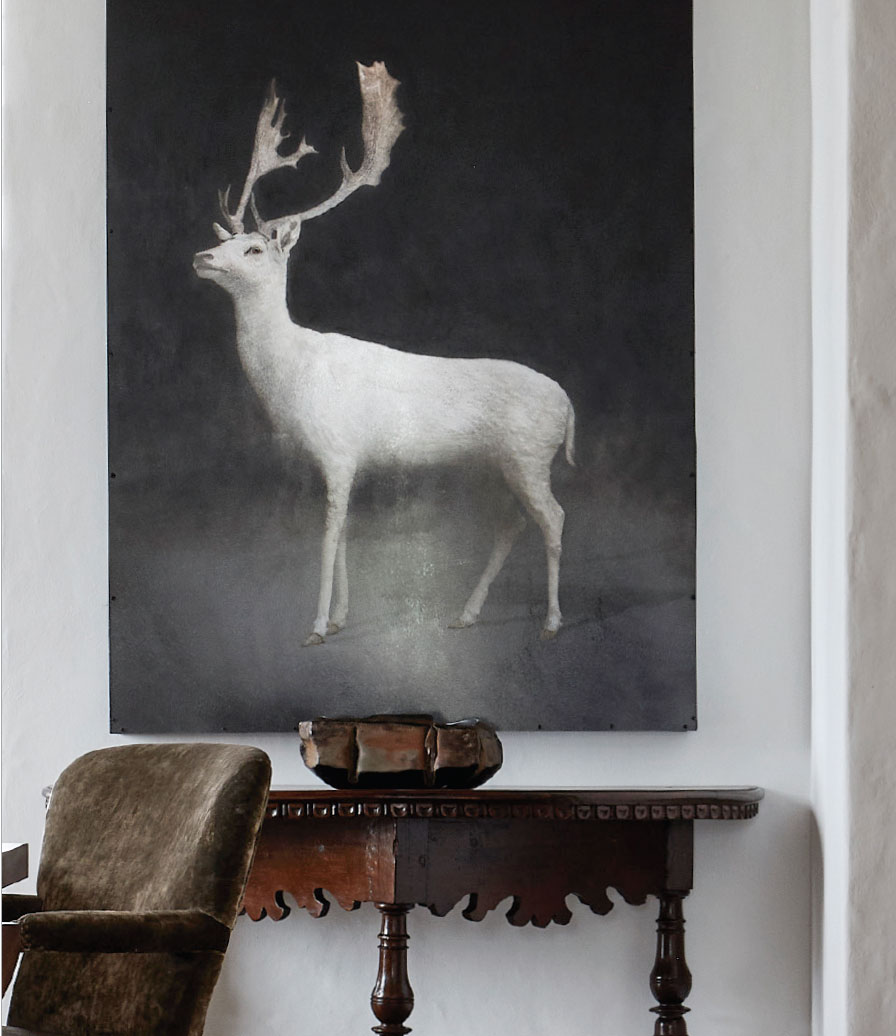
In a blended cocktail, the whole is more important than its components. With hints of fruit, herbs, and the liquor, the taste experience is a composite. Blended cocktail recipes are more like guidelines. They are executed less with fixed measurements and strict preparation protocols and more by instinct. Customers’ tastes vary widely and one size doesn’t fit all.
Working as part of the core team of the architect, landscape architect, and builder, Peace Design incorporates design elements that are rooted in disparate realms—culture, art, history, and environment. With the client core to the process, Peace works closely with this team and their partners to integrate these elements into the plan. The relationships are delicate, both between the interiors and architecture and among the people.
For a sprawling ranch property in Texas, Peace began with a study of history—the client’s history. Peace says, “On the surface, this man’s passions and interests may appear ‘everything macho.’ He collects World War II planes, treks to Africa for hunts, and honors American exceptionalism. But as I got to know him, I realized his passions are rooted in an appreciation for the many cultural influences in that region of the Southwest—Native American, Spanish Colonial, and 20th-century American—in a nutshell, the blend that is all Texas.”
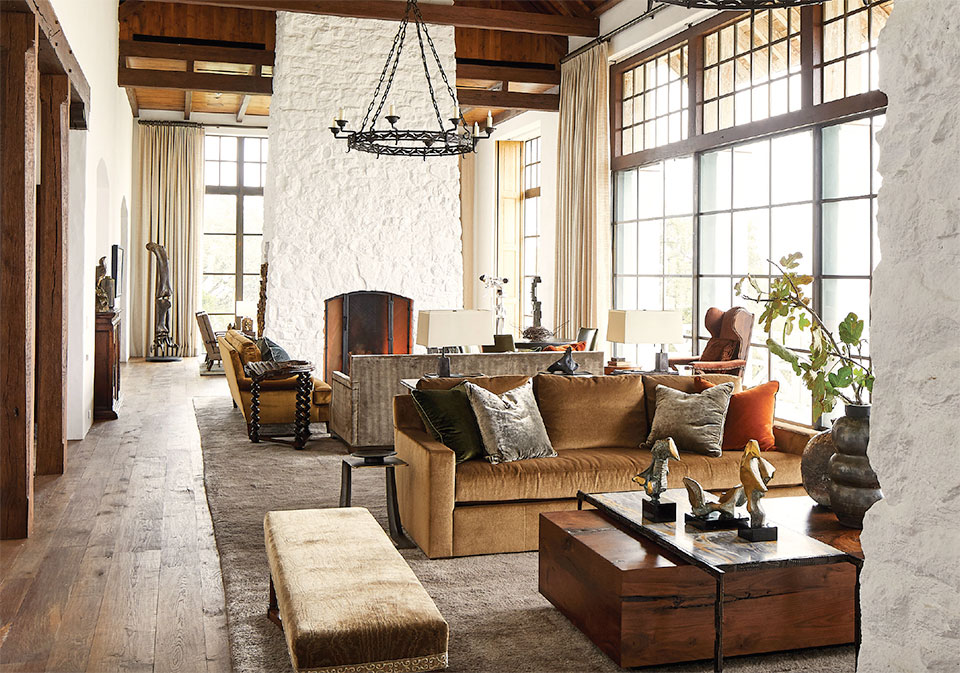
The estate’s ranchland and the location’s climate are much like parts of Africa and the architecture reflects that with its melding of Cape Dutch, Mediterranean, and Latin American styles. These influences extend to the interiors in a variety of forms such as African animal mounts, stately European antiques, gunstock walnut paneling, iconic paintings, ancient Italian marble, and rich luxurious textiles. While the motifs may seem eclectic, they are naturally unified in this Hill Country ranch house.
Bozeman-based Miller-Roodell Architects has worked closely with Peace Design on many Rocky Mountain projects. A principal of the firm, Joe Roodell, says, “Working with the Peace Design team is extremely collaborative and inspiring. From the early stages of design to walking our clients through the door of their finished home, the team brings a strong positive energy that elevates each design to its full potential. Their elegant touch on interiors brings a higher level of sophistication to our designs and therefore enables the home to nestle deeper into the surrounding landscape. They engage with the client and architect very early in the design process to gather a true understanding of the vision and who the client is, thus having the ability to provide a unique aesthetic specific to each client.”
Neat.
No ice. No mixers. Unadulterated. Pure. A drink poured neat is straight from the bottle with nothing added and served at room temperature.
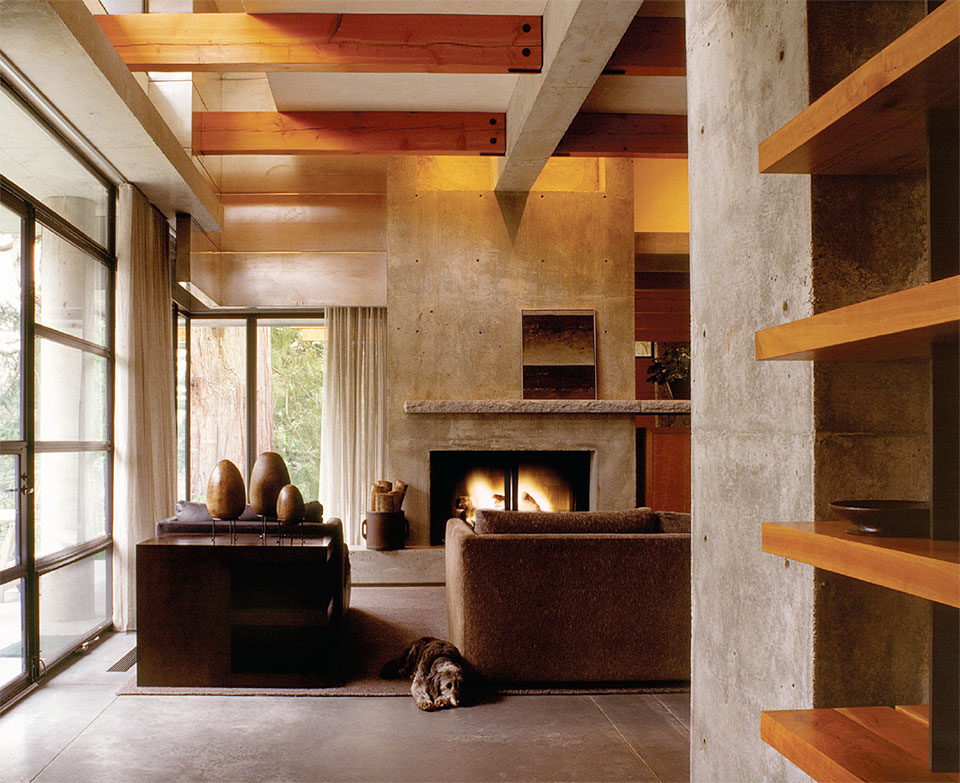
Having helped create homes for families all over the country, Bill Peace and his team strive to have “neat” relationships—straight-up, honest, and mutually appreciative. Working with architects, builders, artists, and artisans, the Peace Design team engages their clients in a hands-on, and sometimes surprisingly fun, collaboration. Peace says, “At the end of the day, it is not about how a room looks but how it feels. And the process of getting there is just as important.”
“Working with Bill is like working with an old friend.”
–Maria Abad-Zabel, Gallery Director, Montana Trails Gallery
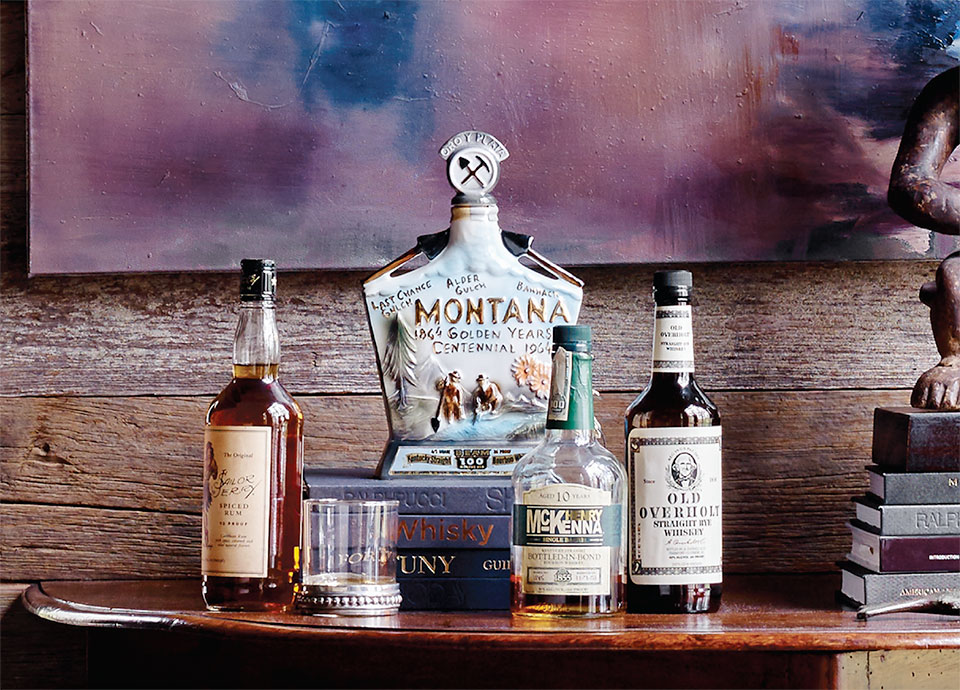
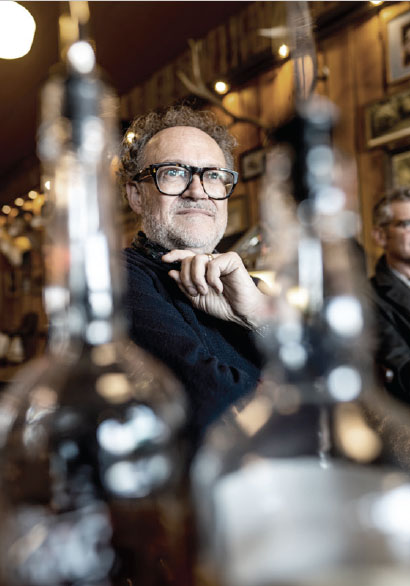
“Our peace shall stand firm as rocky mountains.”
–William Shakespeare
Maria Abad-Zabel, the gallery director at Montana Trails Gallery in downtown Bozeman, says, “Working with Bill is like working with an old friend. We have known each other for a long time and have developed respect and admiration for each other’s work. When he comes into the gallery, he has done his research and understands the client—their tastes, their aesthetics, and their vision of the space. His approach is down-to-earth and authentic and without any pretension or ego. His focus is the human relationships and how people relate to their environment.”
Whether shaken, stirred, blended, or neat, what you’ll remember about your cocktail experience is not just the drink, but the truly extraordinary mixologist who served it.
